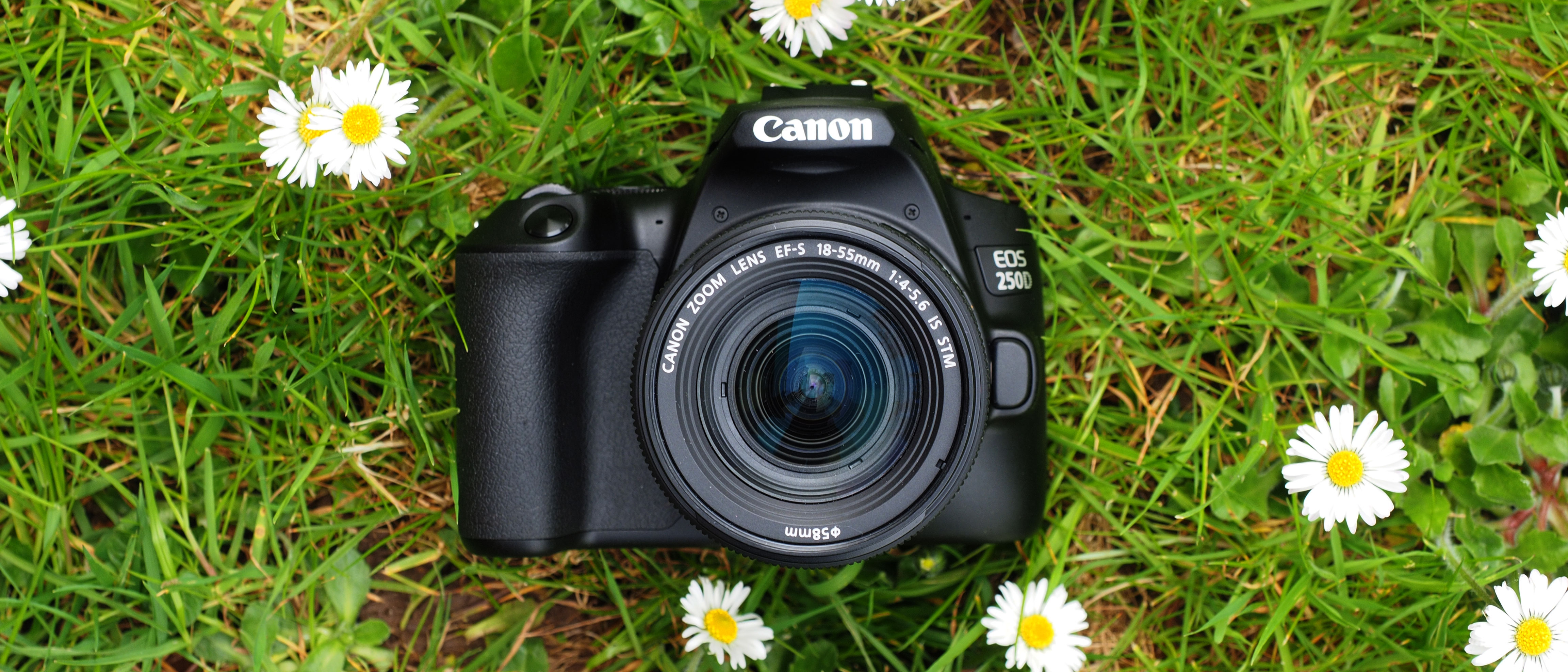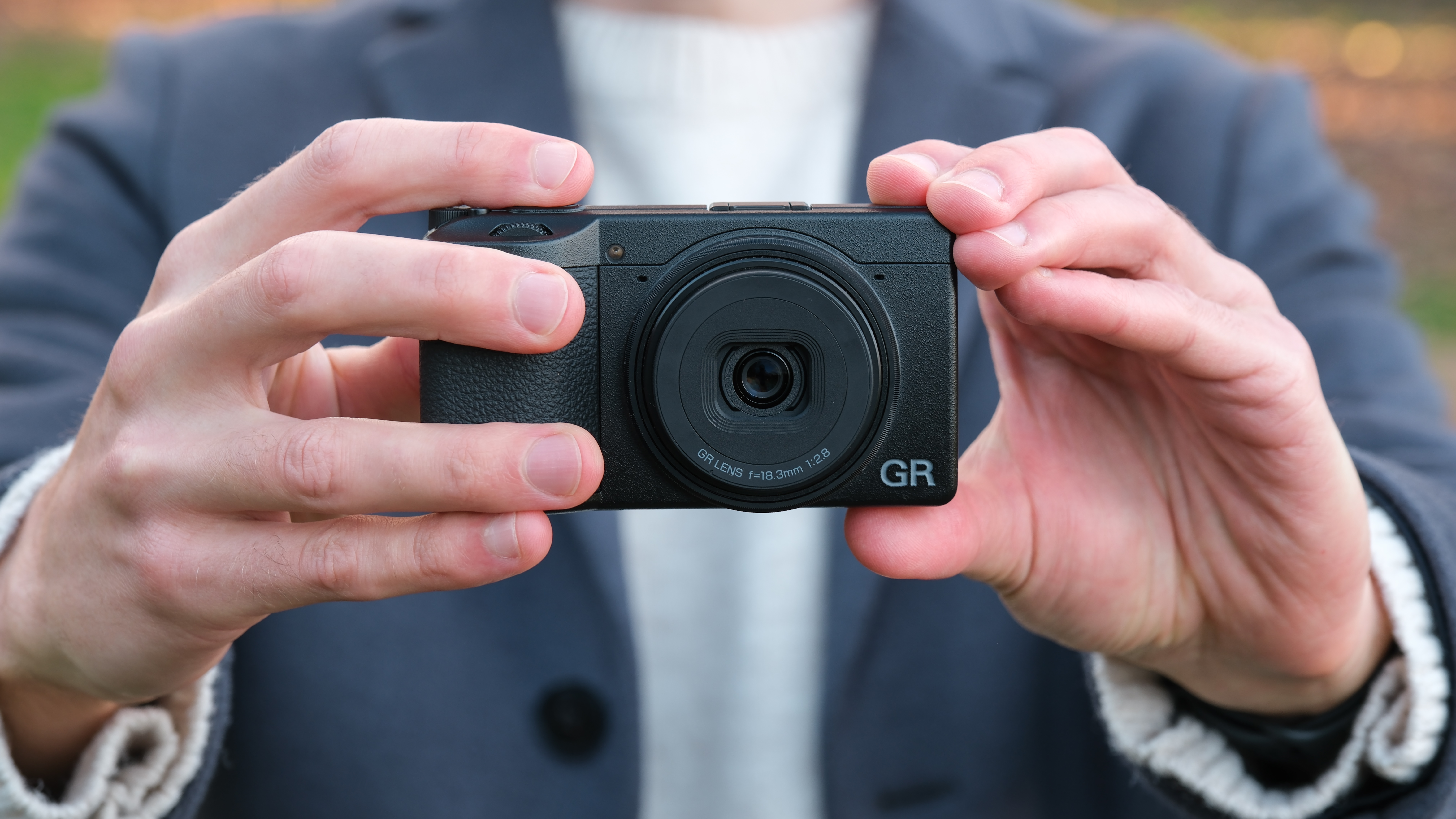Digital Camera World Verdict
There are two cheaper DSLRs in the Canon range than this one – the EOS Rebel T100 / 4000D and the EOS Rebel SL7 / EOS 2000D – but we reckon this EOS SL3 / 250D is a better buy than both of them. The T100 / 4000D was so cheap it was actually quite unappealing and looks as if it's on the way out, whereas the features of the SL7 / 2000D have been cut back so hard to make its low price point that it's hard to recommend. The SL3 / 250D does cost more, but it's worth paying the extra. It comes with Canon's top APS-C sensor, very good Live View autofocus, a vari-angle touchscreen and 4K video in the perfect package for beginners.
Pros
- +
Very light and compact for a DSLR
- +
Great Live View autofocus response
- +
Vari-angle touchscreen
- +
Simple but effective controls
Cons
- -
Only 9 AF points in viewfinder shooting
- -
Thicker body than mirrorless rivals
- -
Four-way pad quite small
Why you can trust Digital Camera World
The Canon EOS Rebel SL3 /EOS 250D is not Canon's cheapest DSLR, but it's the cheapest we'd recommend buying. The Canon DSLR range seems to be going through a phase of consolidation rather than technological advancements, which is a polite way of saying that it hasn't done anything especially new for a while. The new EOS Rebel SL3 / EOS 250D fits in that category, with Canon using technologies we've already seen in other Canon cameras to refresh the existing EOS Rebel SL2 / EOS 200D.
Read more: PhotoPlus: The Canon Magazine
There is a new EOS 850D model above this one, but that's proved extremely slow to appear and we haven't yet been able to get a sample for a full review.
But beginners won't care about any of this. They'll only care what this camera costs, what it does and whether it's right for them. And regardless of what you might think about Canon's technical progress (or lack of it), it's judged the EOS Rebel SL3 / EOS 250D pretty much to perfection.
Beginners and new DSLR users don't need the latest tech, they just need an affordable, effective camera that's easy to use and delivers the goods. And Canon has pretty much got that nailed. The previous Rebel SL2 / EOS 200D was one of the best cameras for beginners for its time, not to mention one of the best DSLR cameras, so its replacement can hardly put a foot wrong, right?
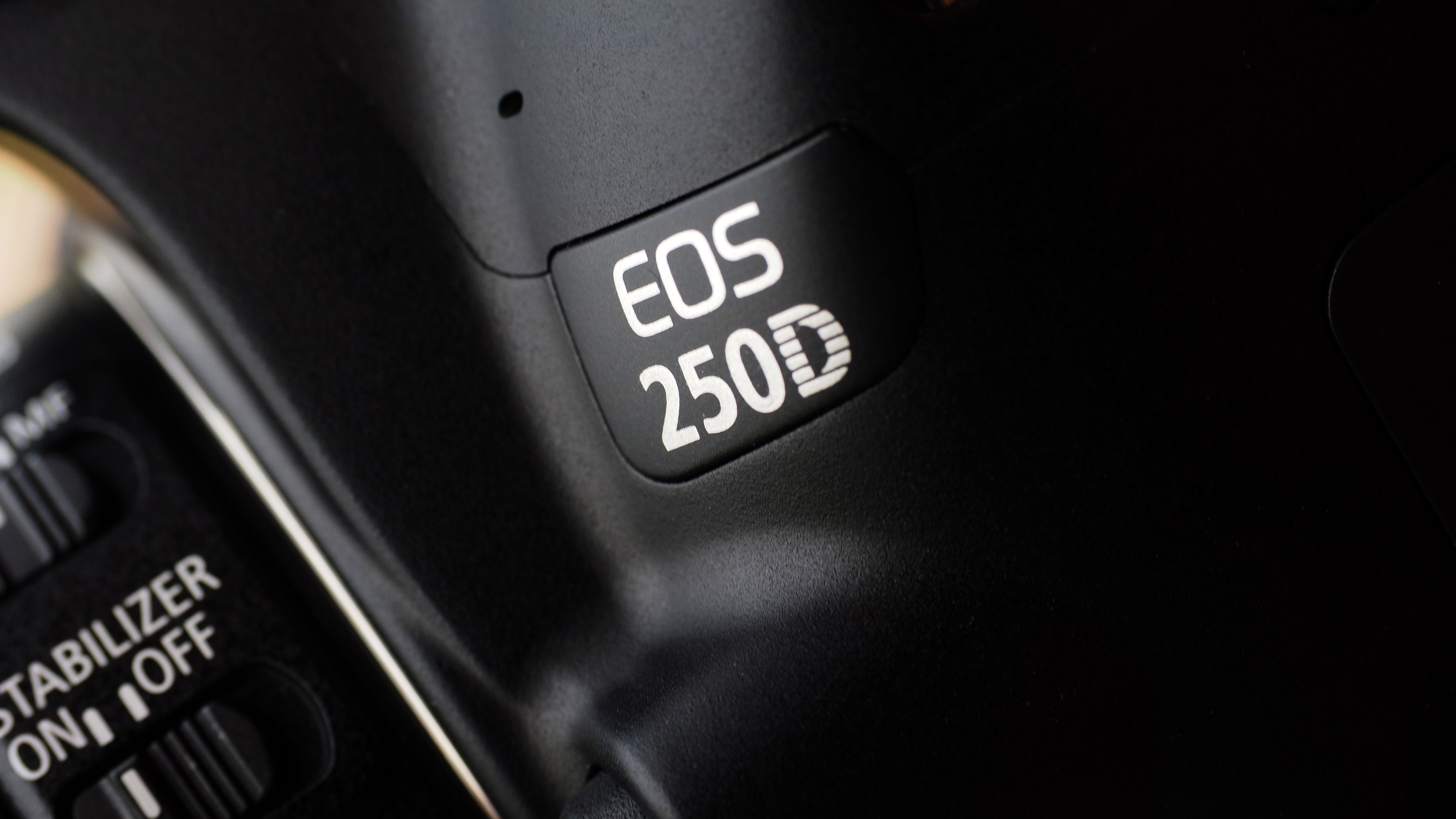
Specifications
Sensor: 24.1MP APS-C CMOS, 22.3 x 14.9mm
Image processor: DIGIC 8
AF points: 9-point phase detection (cross type)
ISO range: 100 to 25,600 (exp. 51,200)
Max image size: 6,000 x 4,000
Metering modes: Evaluative, Centre-weighted, Spot, Partial
Video: 4K UHD at 60p, 50p, 30p, 25p, 24p
Viewfinder: Optical pentamirror, 95% coverage, 0.87x magnification
Memory card: SD/SDHC/SDXC (UHS I compatible)
LCD: 3-inch vari-angle touchscreen, 1.04m dots
Max burst: 5fps
Connectivity: Wi-Fi, Bluetooth
Size: 122.4 x 92.6 x 69.8mm (body only)
Weight: 451g (body only, with battery and SD card)
Key features
Canon is pitching the EOS Rebel SL3/ 250D as the world's lightest DSLR with a movable screen. There are mirrorless cameras smaller than this one, to be sure, but as far as DSLRs go, Canon is quite correct.
The best camera deals, reviews, product advice, and unmissable photography news, direct to your inbox!
If size matters more than the actual camera design, however, you might want to take a look at the new mirrorless Fujifilm X-T200.
Despite the debate around DSLRs vs mirrorless cameras, the DSLR design still has a lot going for it. DSLRs are chunkier and easier to grip than most beginner-orientated mirrorless cameras, they have clear optical viewfinders which many still prefer over digital versions, and the batteries last a lot longer because they're not continually powering a digital display.
Canon is going for the entry-level market, with a combination of point-and-shoot simplicity, a Guided UI (user interface) to walk new users through the basics of photography, and a Creative Assist mode for more adventurous photographic effects. Underlying all this is all the manual control you'd expect in a DSLR, so that when you're ready to move on to more manual techniques, the EOS Rebel SL3 / 250D can stay right with you.
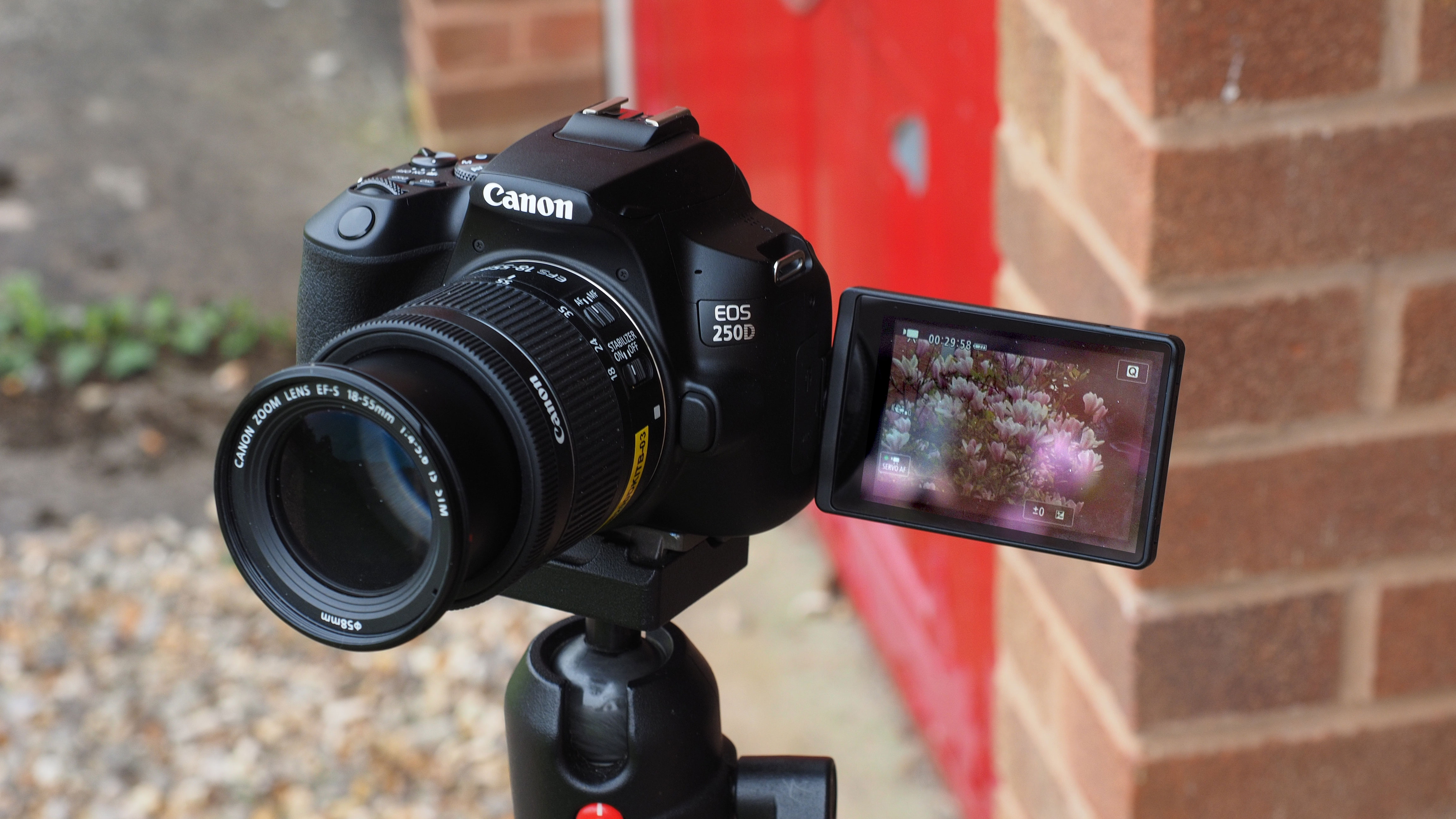
Inside is a 24.1-megapixel APS-C sensor of a type we see in lots of Canon cameras and similar in size and resolution to those used by competing Nikon, Sony and Fujifilm cameras, like the Nikon D5600, Sony A6400, Fujifilm X-T200 and even Canon's own mirrorless EOS M50. Here, it's matched up with Canon's latest DIGIC 8 processor, which gives the new camera better image quality at high ISO settings than the older EOS Rebel SL2 / 200D, more advanced live view autofocus and 4K video, for the first time in a DSLR at this price.
If you're using the viewfinder, the Canon offers a basic but effective 9-point autofocus system. That's not much by today's standards, but the focus points are spread evenly across more than half the width and height of the frame, they're clearly marked and it's a simple setup for novices to get used to.
The Live View autofocus is much more sophisticated. It uses Canon's own Dual Pixel sensor technology, which splits each photosite on the sensor in two in order to check distance using the same phase detection autofocus principle used by DSLRs. It's faster than the conventional 'contrast AF' used by many sensors in live view. In the Rebel SL3 / 250D, there are no fewer than 3,975 user-selectable AF points covering up to 88% of the frame width and 100% of the height, depending on the lens used.

This camera's other key features are its 3-inch vari-angle touchscreen display and built in Wi-Fi and Bluetooth for wireless image transfer to a smartphone or tablet.
Build and handling
The Rebel SL3 / EOS 250D is very small for a DSLR, especially in width and weight. The DSLR design means the body has to be thicker to accommodate the mirror, and while the Canon 18-55mm f/4-5.6 IS STM kit lens is pretty compact, it's not a retracting type, so the combination of the thick camera body and lens makes the Canon a lot 'longer' than rival mirrorless cameras like the Fujifilm X-T200. It's certainly compact for a DSLR, but it's a good deal bigger than a mirrorless model, especially if you weight it up against Micro Four Thirds rivals from Olympus and Panasonic.
The body has a good-sized grip, making the Canon easy and secure to hold one-handed. The body does have a slightly plasticky feel, but that's offset by high-quality knobs and dials – especially the main mode dial and power on/off switch, which has a third position for entering the video mode.
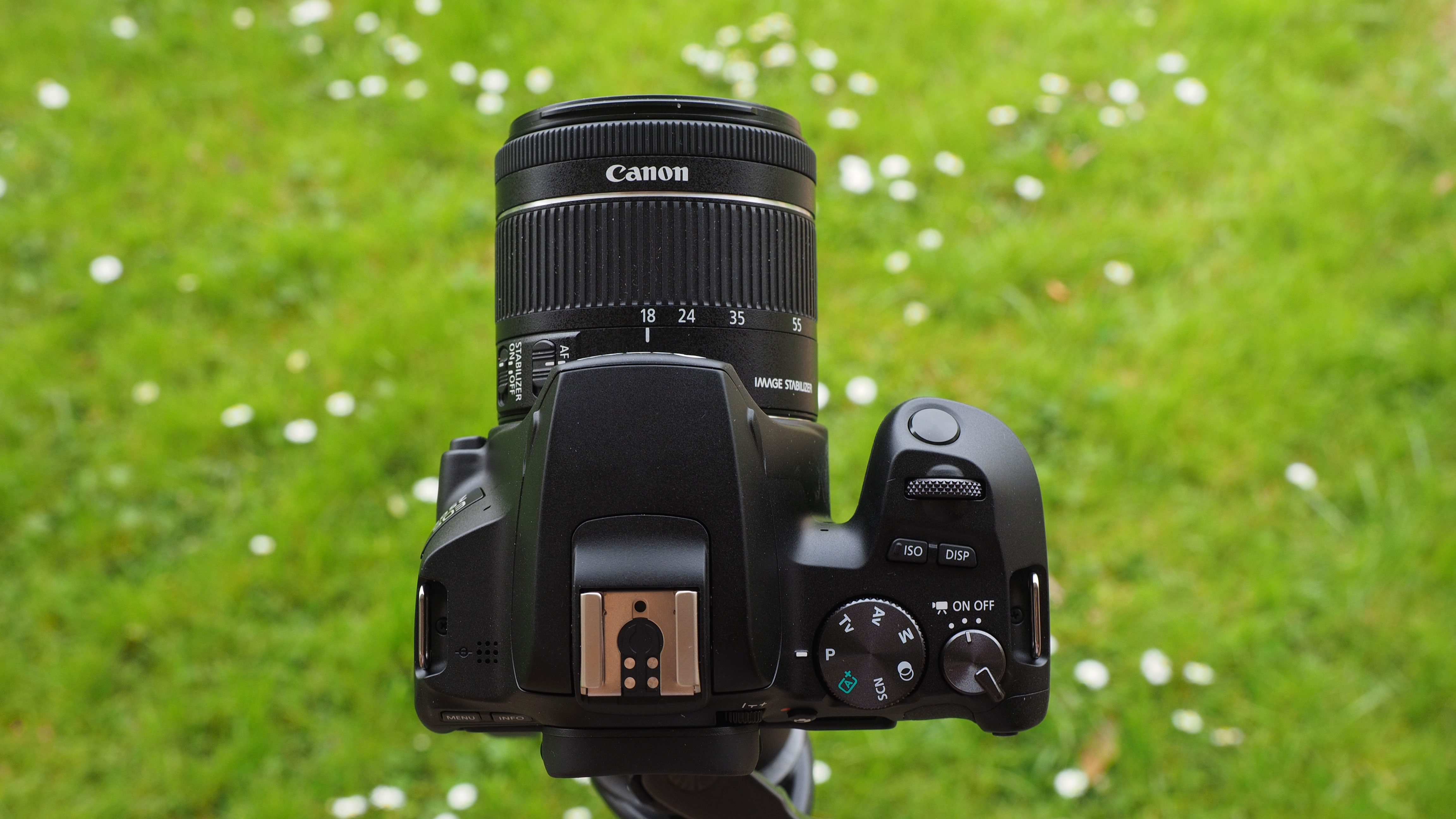
The viewfinder is a little smaller than average for a DSLR because it uses a cheaper 'pentamirror' design rather than the usual pentaprism, but it's bright and sharp and the autofocus points and shooting information show up clearly.
The vari-angle screen on the back is excellent. You switch to Live View by pressing a button on the back of the camera and you can then use the touch control to set the focus point and change camera settings. It's sharp, colourful and clear and the touch response is first rate. Apart from the mechanical noise when the mirror is flipped up to enter Live View mode, this is just like using a mirrorless camera, as the autofocus response is just as rapid.
It's interesting that while many people are commenting on how mirrorless cameras are becoming better than DSLRs, Canon has designed a DSLR to match mirrorless cameras for the very thing they're designed to do best – live view photography.
You can flip the rear screen out to use it at any angle, fold it back against the camera facing outwards to show settings and image information, or fold it so that it's facing inwards for protection, and just use the viewfinder to compose and shoot your pictures.
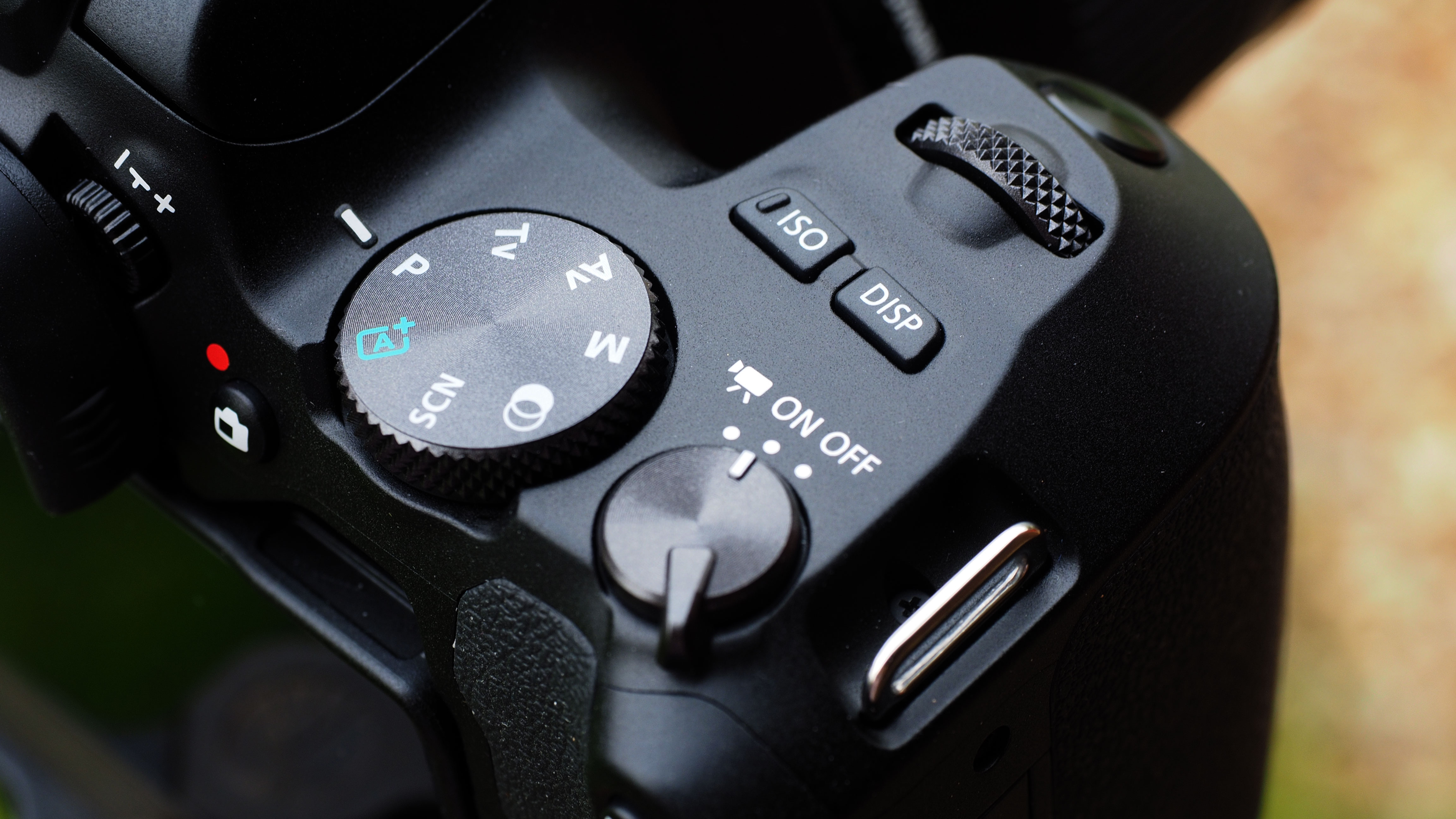
Some of the minor buttons feel a little small and the rear four-way control pad is certainly on the small side, squashed in between the LCD display and the edge of the camera. However, given the Rebel SL3 / 250D's small size, Canon has done a great job of finding space for its external controls while still giving them room to breathe.
It's a bit annoying that you have to open the battery door on the base of the camera to get to the memory card slot rather than having a separate door in the side of the camera, but this is common in cameras in this price bracket, and it's only an issue if you want to swap memory cards while the camera is on a tripod.
Performance
If you were shooting sports and tracking fast-moving objects you'd need a more sophisticated autofocus system than the 9-point AF in the Rebel SL3 / 250D, but although it can keep up a reasonable 5 frames per second continuous shooting speed, it's not that kind of camera, and for everyday photography the autofocus system is fine.
It's even better in Live View mode, where Canon's latest Dual Pixel CMOS AF system takes over and delivers autofocus speeds which feel even faster. You can choose between subject-tracking AF mode, Spot AF, Single point AF and Zone AF, in either single-shot mode or continuous Servo AF mode.
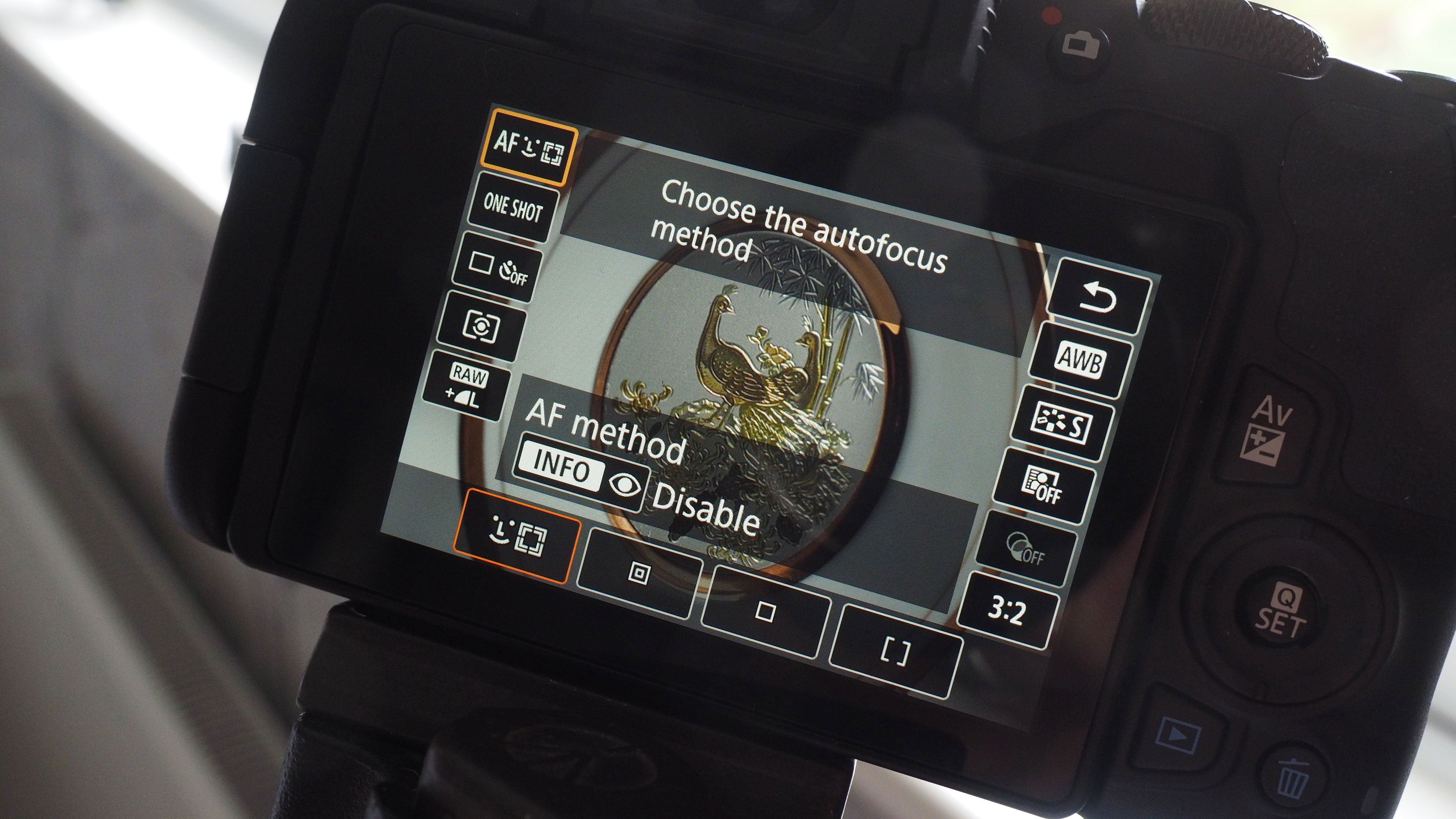
You switch from stills photography to video using a third position on the main power switch. The camera automatically enters Live View mode (you can't shoot video using the viewfinder on a DSLR because the mirror is locked up) and switches to continuous autofocus mode.
4K video is a big selling point on this camera, but you do notice a couple of limitations when you switch from full HD (1080) capture to 4K. First, there's a significant 'crop factor' in 4K mode, which means your lens's angle of view effectively becomes narrower. This is common on but the most recent Canon cameras and while you do quickly get used to it, it does mean you may have to step back to recompose your shot.
The other limitations is that you can no longer use the Spot AF and Zone AF modes, but the Subject Tracking and Single Point AF are arguably all you need anyway, and the camera does a great job of following subjects around the frame once the autofocus has locked on.
Focusing in the video mode isn't instantaneous, but with the Canon STM (stepping motor) kit lens it is smooth and silent, giving nice focus transitions between different subjects and distances rather than sudden, jerky movements.
We've tested many other Canon cameras with this sensor, or close relatives, so that lab results offered no real surprises. Unlike some other camera makers, Canon still uses low-pass filters in front of its sensors to reduce the risk of 'moiré' artefacts, so the resolution is slightly lower than the Nikon D5600, which does not have one of these filters (they do introduce a slight blur).
The Canon's dynamic range – its ability to capture detail in very bright and very dark areas – is about average, while its noise levels at high ISO settings are pretty good, and better than the older Rebel SL2 / EOS 200D. We put that down to the newer DIGIC 8 processor.
Overall, the Rebel SL3 / EOS 250D is a very competent, if unexceptional performer, and easily good enough for its target audience of beginners and smartphone upgraders.
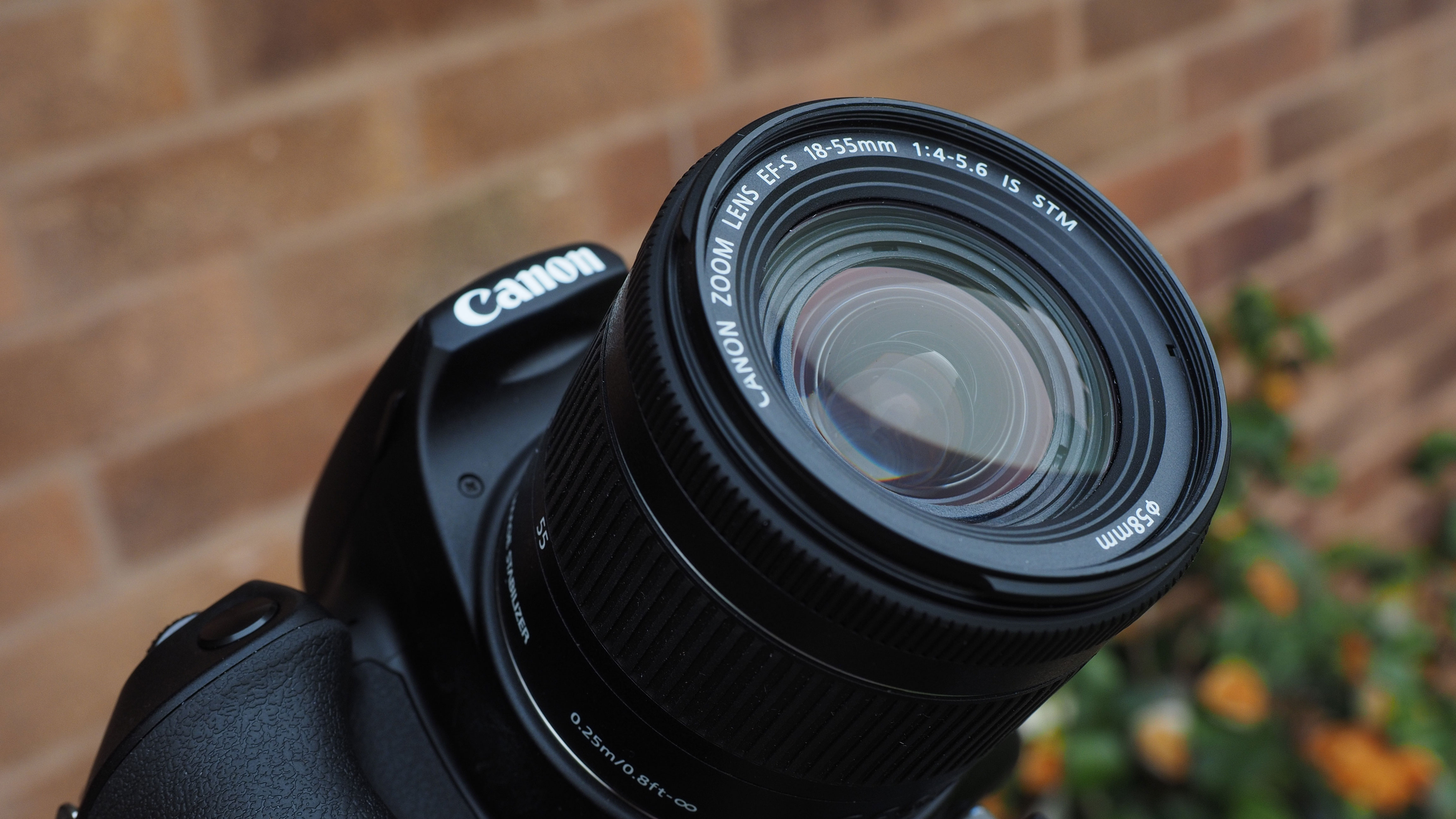
Lab results
We ran our full suite of lab tests on the EOS Rebel SL3 / EOS 250D and compared them with the results from three big rivals: the Olympus OM-D E-M10 Mark III, Nikon D5600 and Fujifilm X-T100.
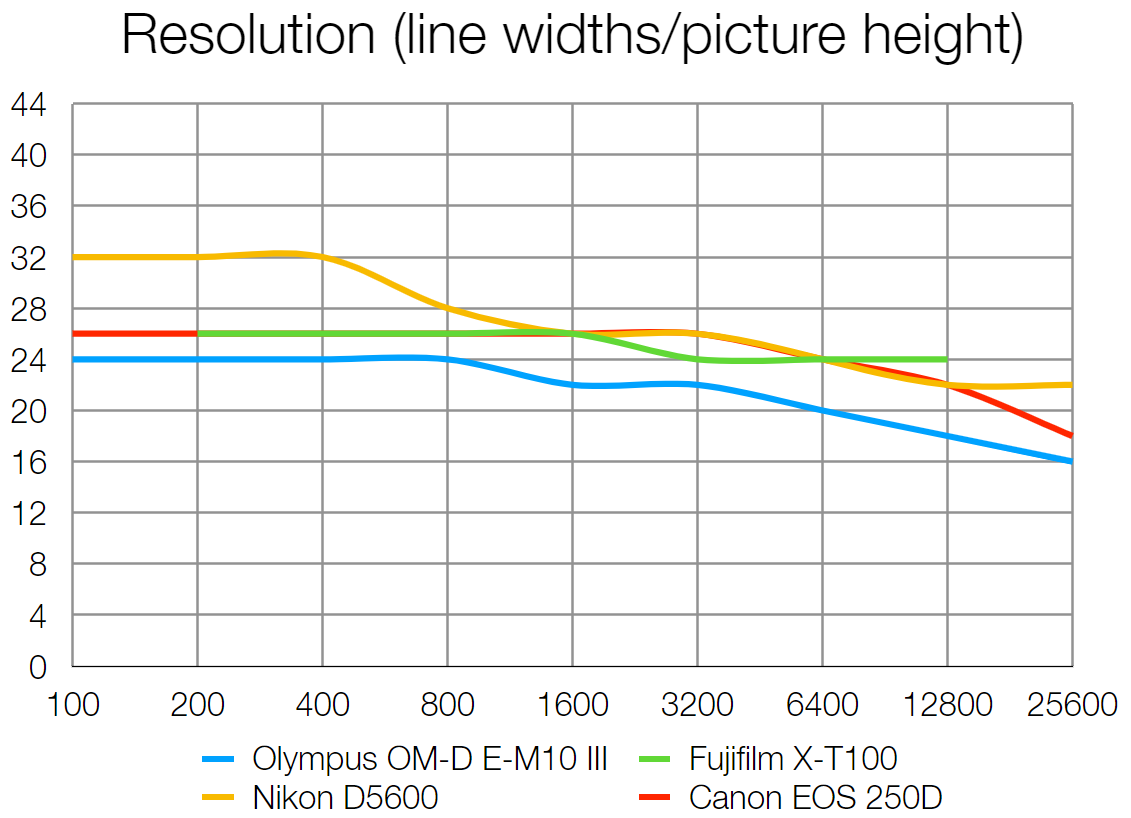
Resolution:
As they both pack 24MP sensors, it's no surprise that the EOS 250D and Fujifilm X-T100 are identically matched for image sharpness. The anomaly is the 24MP Nikon D5600, which at sensitivities up to ISO 1600 is performing beyond what its specs would suggest. This is likely do to Nikon's slightly more relaxed noise reduction processing, which significantly hinders its signal to noise score (above) due to extra grain, but the payoff is razor-sharp image quality and slightly better fine detail retention.
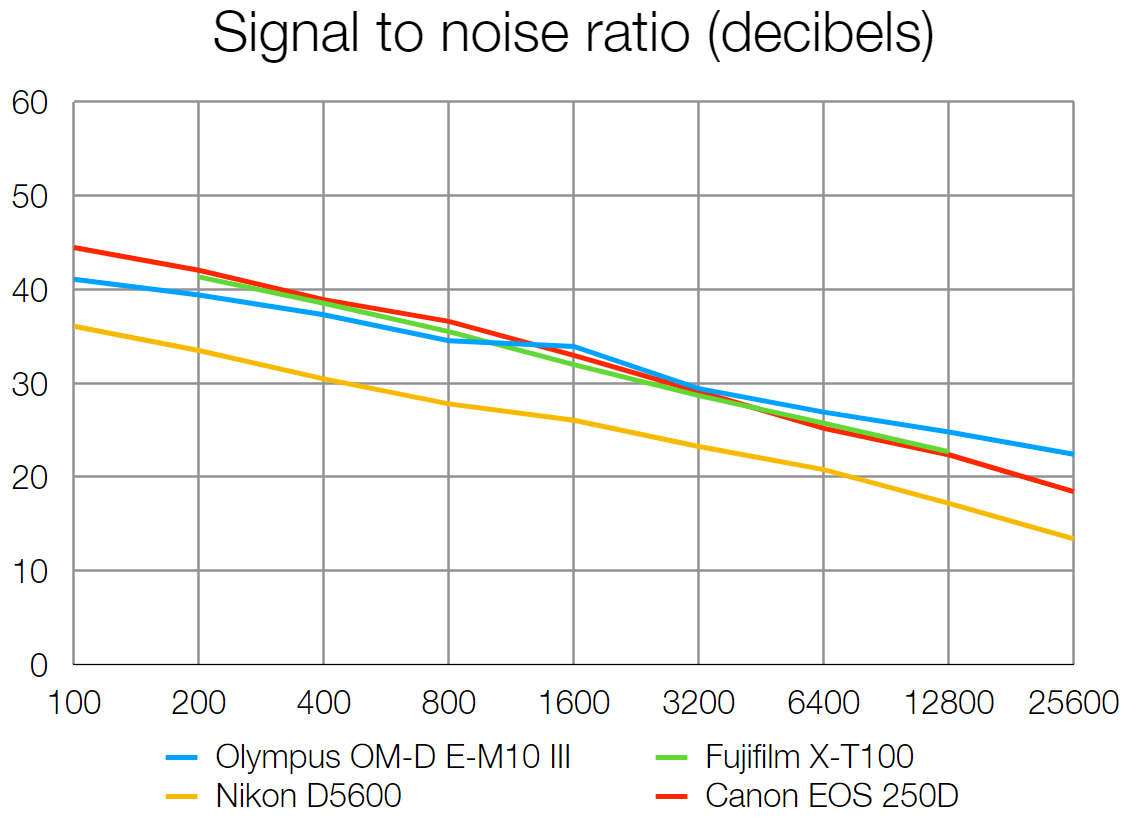
Signal to noise ratio:
This test measures the clarity of images at each of the camera's ISO sensitivity settings – the less noise/grain in an image, the better the score. The EOS 250D does well here, producing the cleanest images of the group at lower sensitivities, and only trailing the Olympus E-M10 III by a small margin at ISO 3200 and above.
Though the EOS 250D likely uses the same sensor as in the 200D, as well as older cameras like the 800D, the new DIGIC 8 processor in the 250D has improved the camera's signal to noise performance, as it scores around 5% better than the 200D at each sensitivity setting.
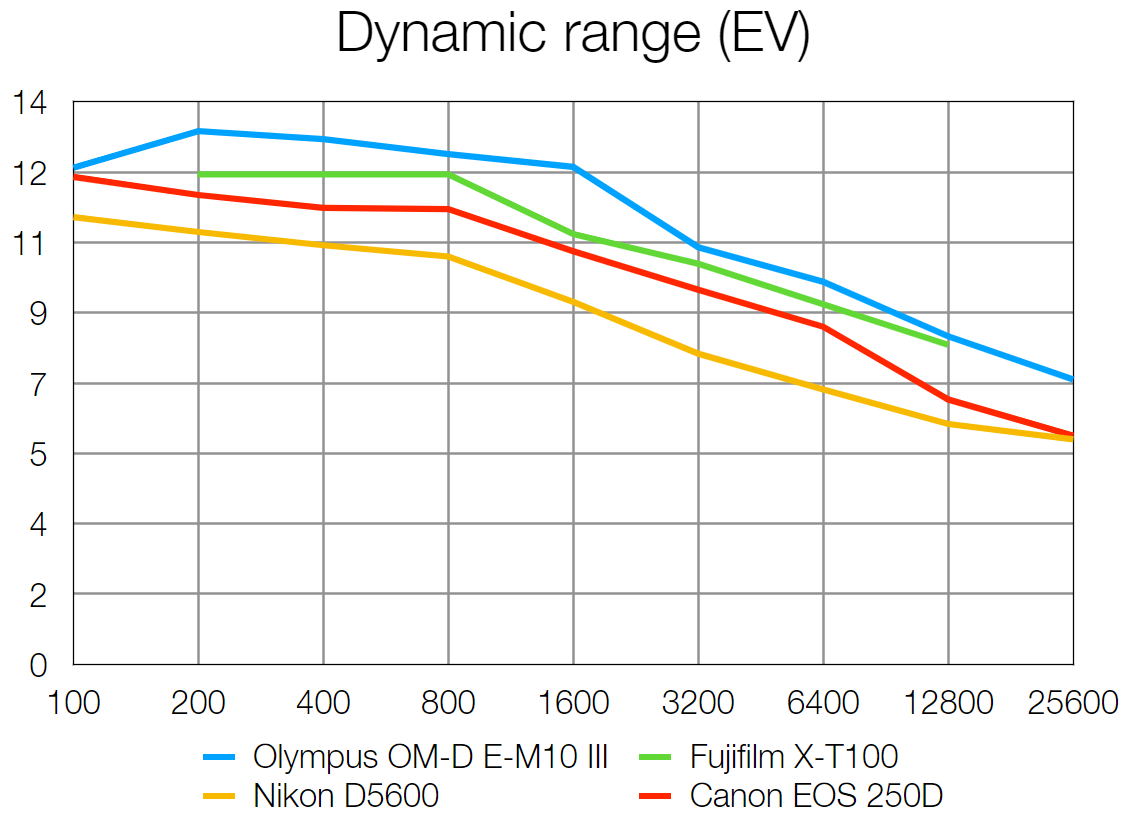
Dynamic range:
The EOS 250D is capable of very similar dynamic range to its 24MP APS-C Canon DSLR stablemates at lower ISO sensitivities, but that new DIGIC 8 processor has marginally improved dynamic range at ISO 800 and above. It's still not enough to outdo the Fujilfilm X-T100, let alone the mighty Olympus E-M10 III, but the EOS 250D handily beats its main DSLR rival from Nikon.
Verdict and competition
There are two cheaper DSLRs in the Canon range than this one – the EOS Rebel T100 / 4000D which may not be around much longer and the EOS Rebel SL7 / EOS 2000D – but we reckon this EOS SL3 / 250D is a better buy than both of them. It does cost more, but it's worth paying the extra. The two cheaper Canons are built down to a price and lack features you're almost certainly going to want later, while the Rebel SL3 / 250D has Canon's top APS-C sensor, very good Live View autofocus and 4K video and is the perfect DSLR for beginners.
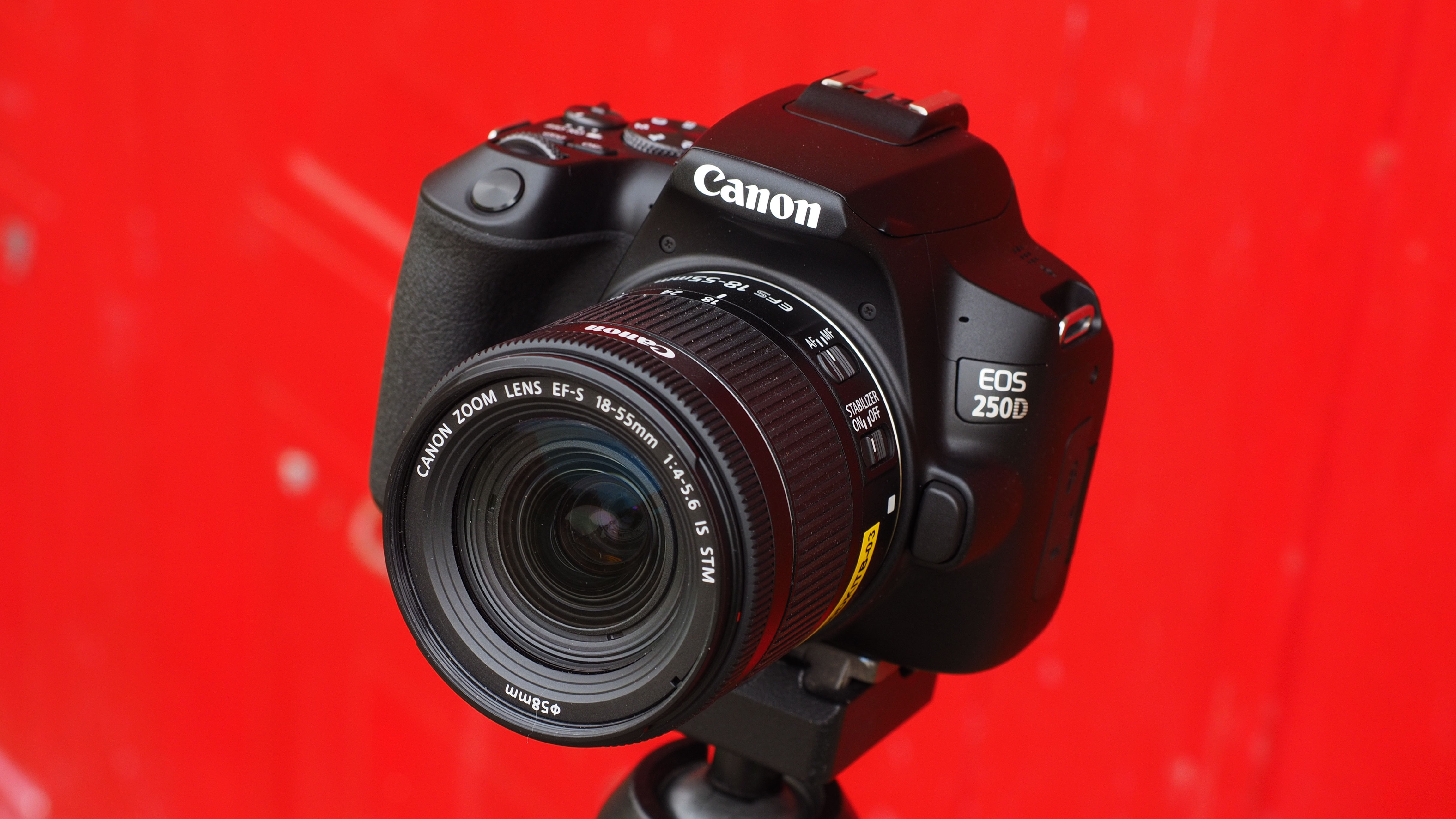
But it's not the only choice, especially if you're prepared to consider other brands, and mirrorless rather than DSLR camera designs. Here are three cameras we think are key rivals for the EOS Rebel SL3 / 250D.
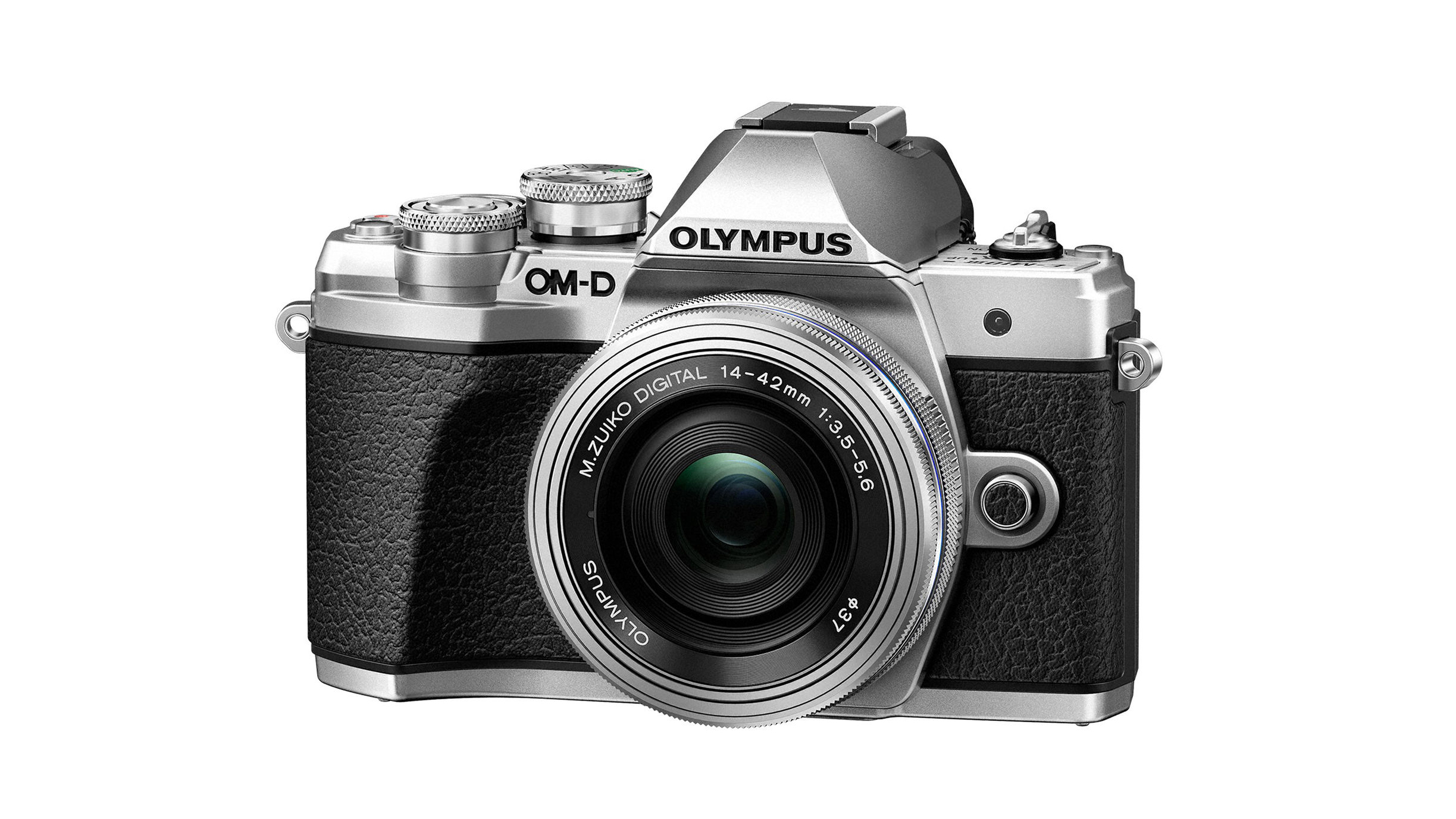
Olympus OM-D E-M10 Mark III
The Olympus OM-D E-M10 Mark III uses a smaller Micro Four Thirds sensor with 16 million pixels. It can't quite match the resolution of the Canon, but it comes pretty close, and its dynamic range and noise performance is excellent. Its body is a lot smaller than the Canon's and its super-slim 14-42mm 'pancake' kit lens is smaller still. The Olympus shoots 4K video, has an excellent in-body image stabilisation system, offers more advanced shooting options for enthusiasts and comes with a wide selection of creative Art Filters.
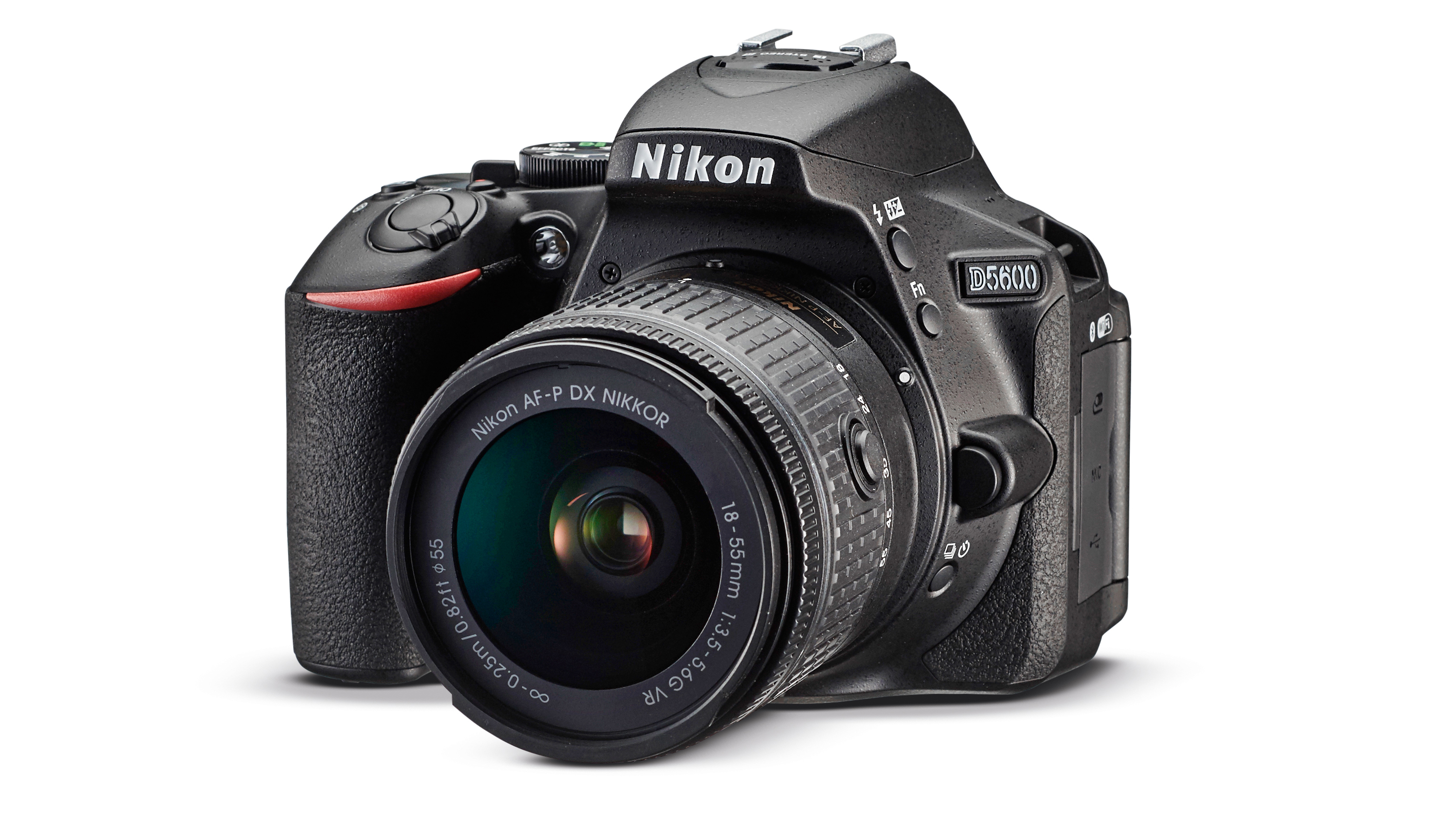
Nikon D5600
Like the Canon Rebel SL3 /250D, the Nikon D5600 has a 24-megapixel APS-C sensor and a vari-angle rear screen and is designed for advanced beginners keen to experiment with new techniques. It doesn't have the Canon's 4K video mode or its advanced Dual Pixel CMOS AF system, so its autofocus in Live View mode is slower. What the Nikon does deliver is very high levels of detail, a more advanced viewfinder autofocus system and a very effective retracting 18-55mm AF-P kit lens that's compact and offers fast and near-silent autofocus (make sure you get this lens and not a cheaper alternative).
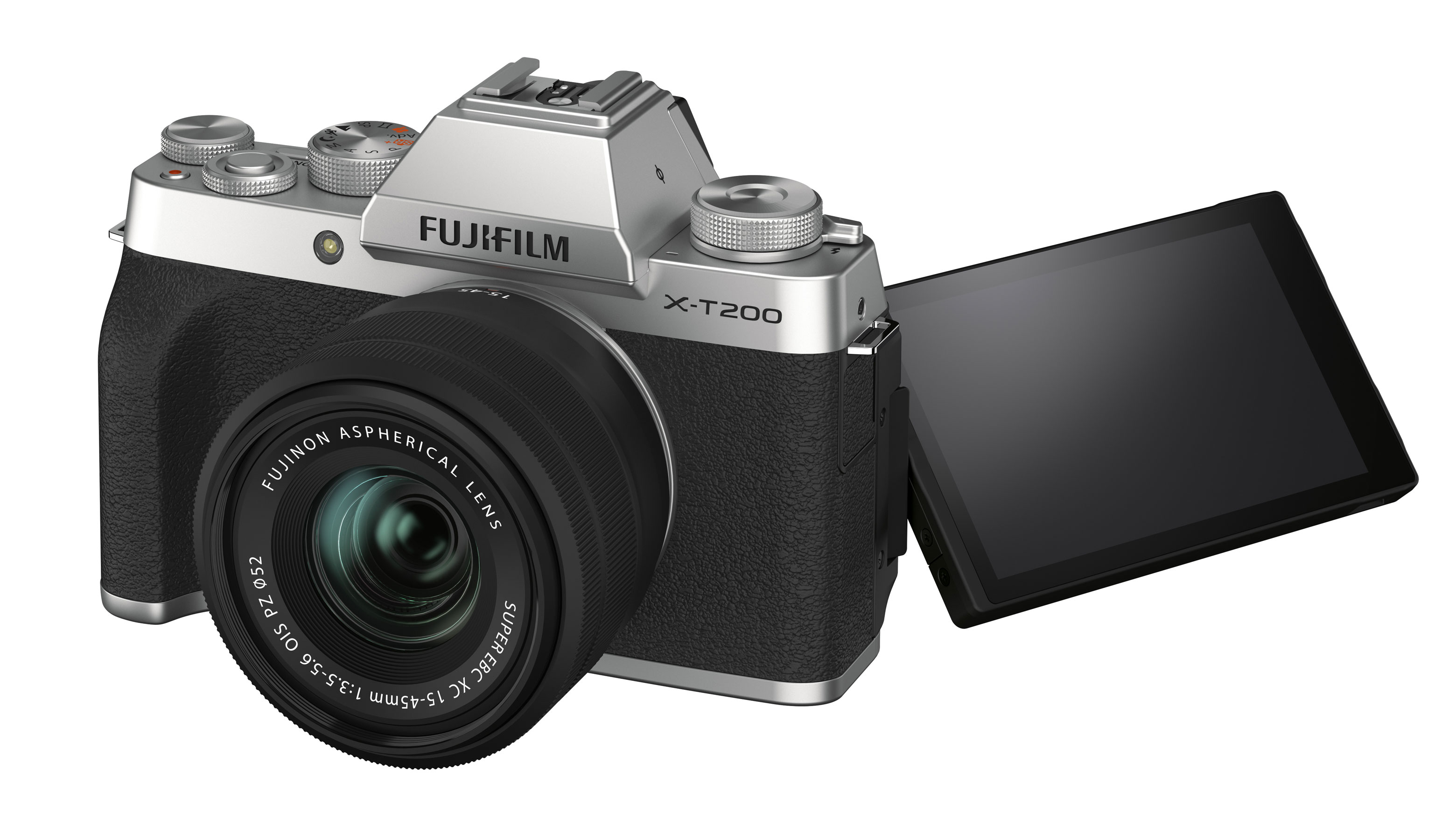
Fujifilm X-T200
We liked the old Fujifilm X-T100 for its simple, elegant design, old-school DSLR looks and modest price. It's since been replaced by the far more powerful Fujifilm X-T200 with vari-angle touchscreen and full-powered 4K video, not the crippled 15fps capture of its predecessor. Good as it is, the X-T200 is now priced slightly outside the EOS Rebel SL3 / 250D price range, so it's a more expensive option – but still worth a long, hard look for anyone looking for compactness, style and stills/video versatility.
Read more:
• Best lenses for Canon EOS SL3 / 250D
• The best camera for beginners
• The best DSLR cameras right now
• The best mirrorless camera
• The best Canon lenses in 2020
• PhotoPlus: The Canon Magazine

Rod is an independent photography journalist and editor, and a long-standing Digital Camera World contributor, having previously worked as DCW's Group Reviews editor. Before that he has been technique editor on N-Photo, Head of Testing for the photography division and Camera Channel editor on TechRadar, as well as contributing to many other publications. He has been writing about photography technique, photo editing and digital cameras since they first appeared, and before that began his career writing about film photography. He has used and reviewed practically every interchangeable lens camera launched in the past 20 years, from entry-level DSLRs to medium format cameras, together with lenses, tripods, gimbals, light meters, camera bags and more. Rod has his own camera gear blog at fotovolo.com but also writes about photo-editing applications and techniques at lifeafterphotoshop.com
